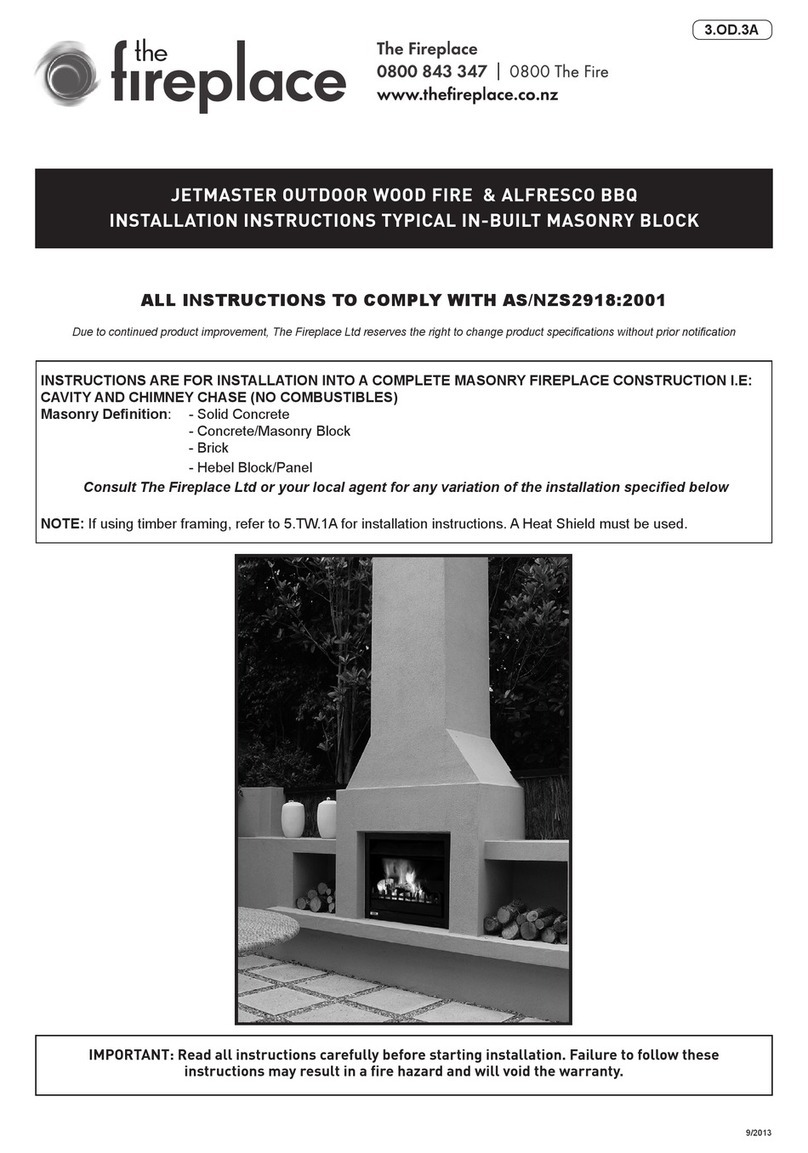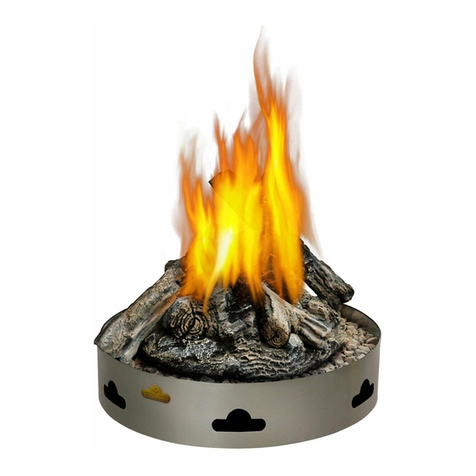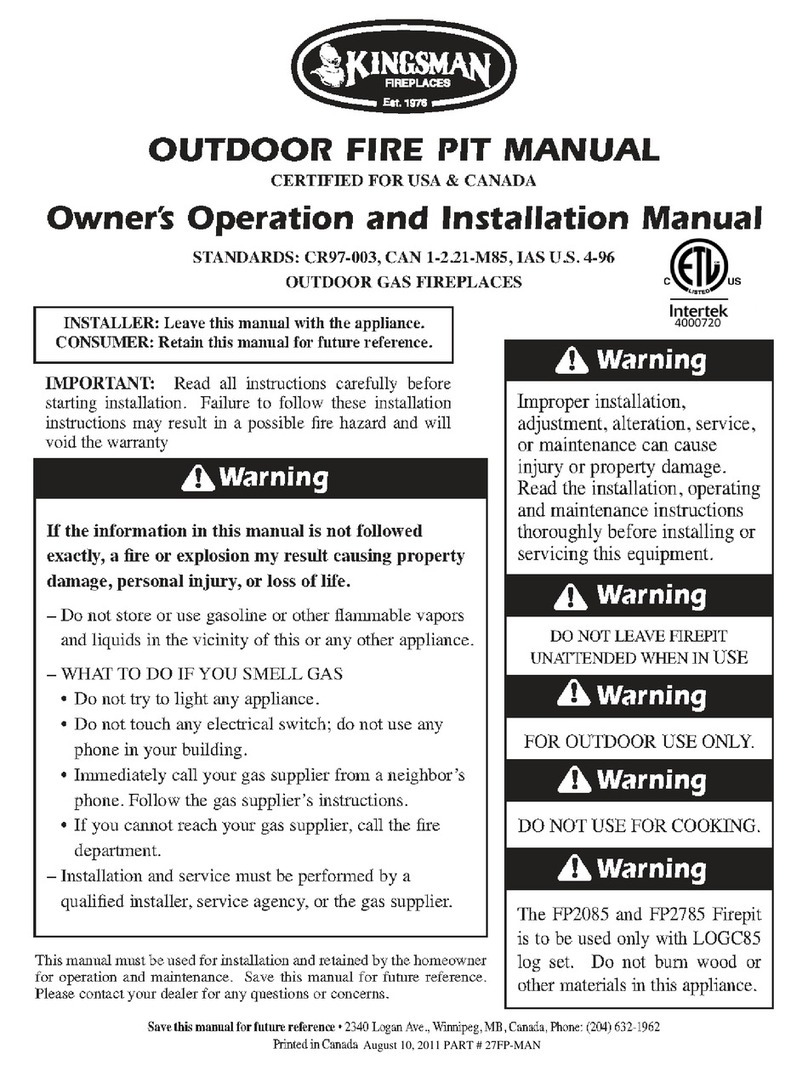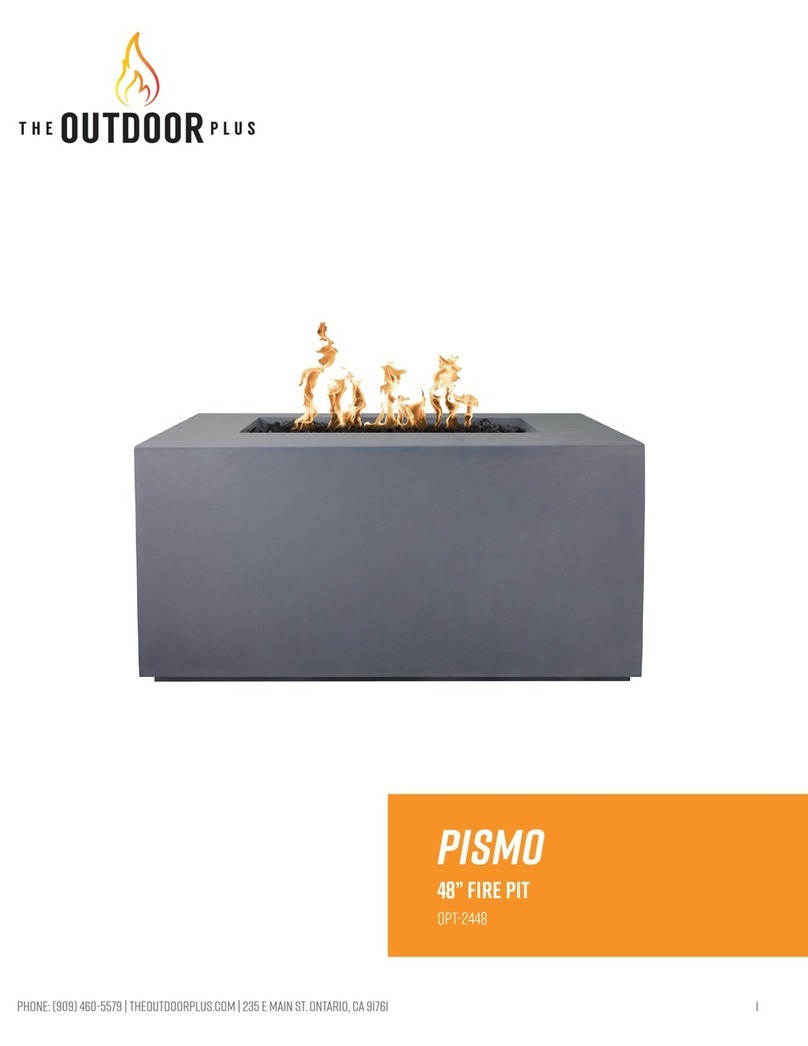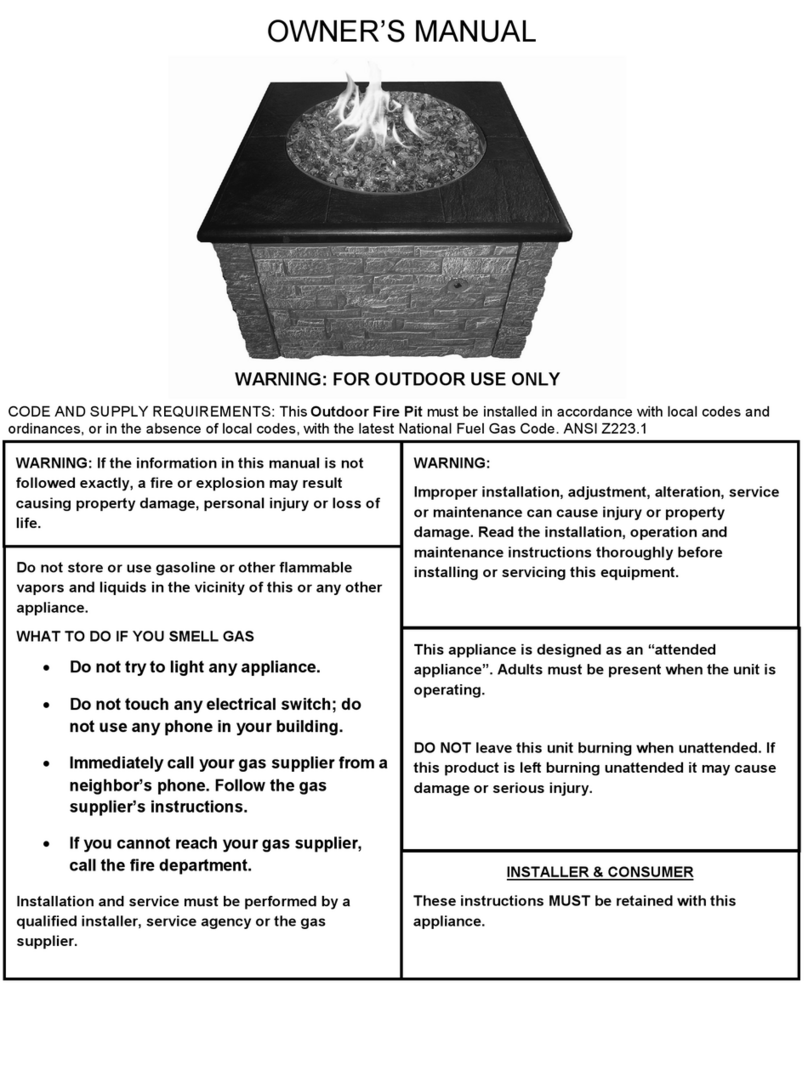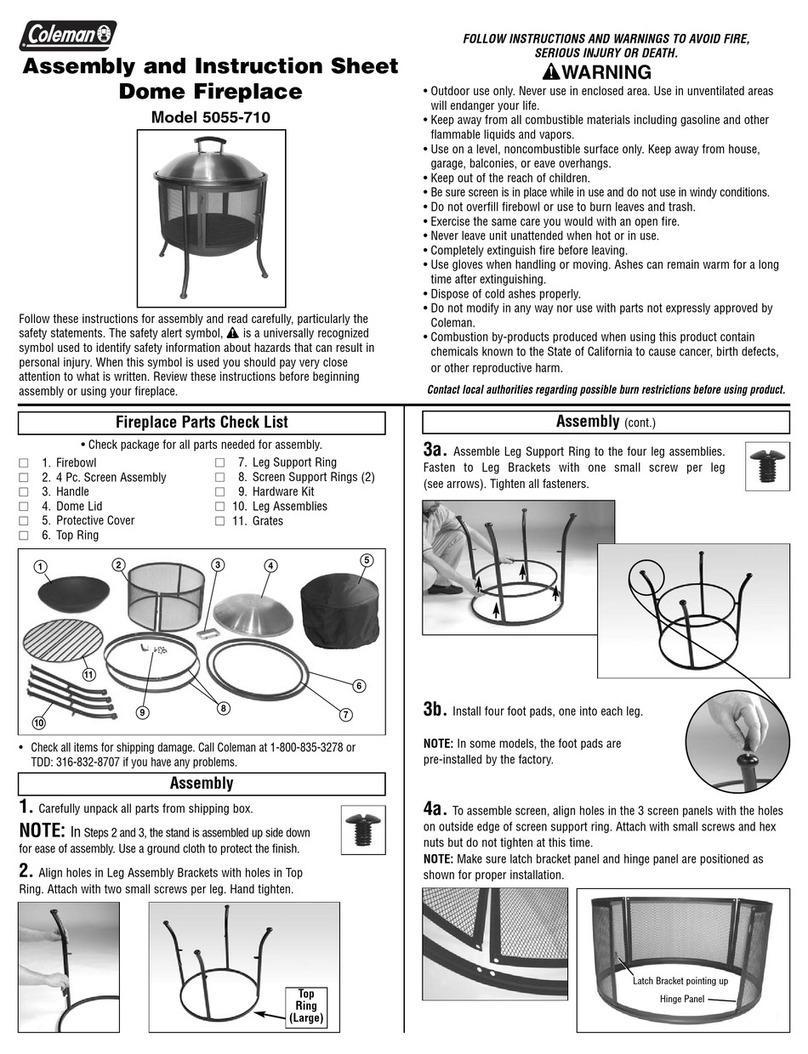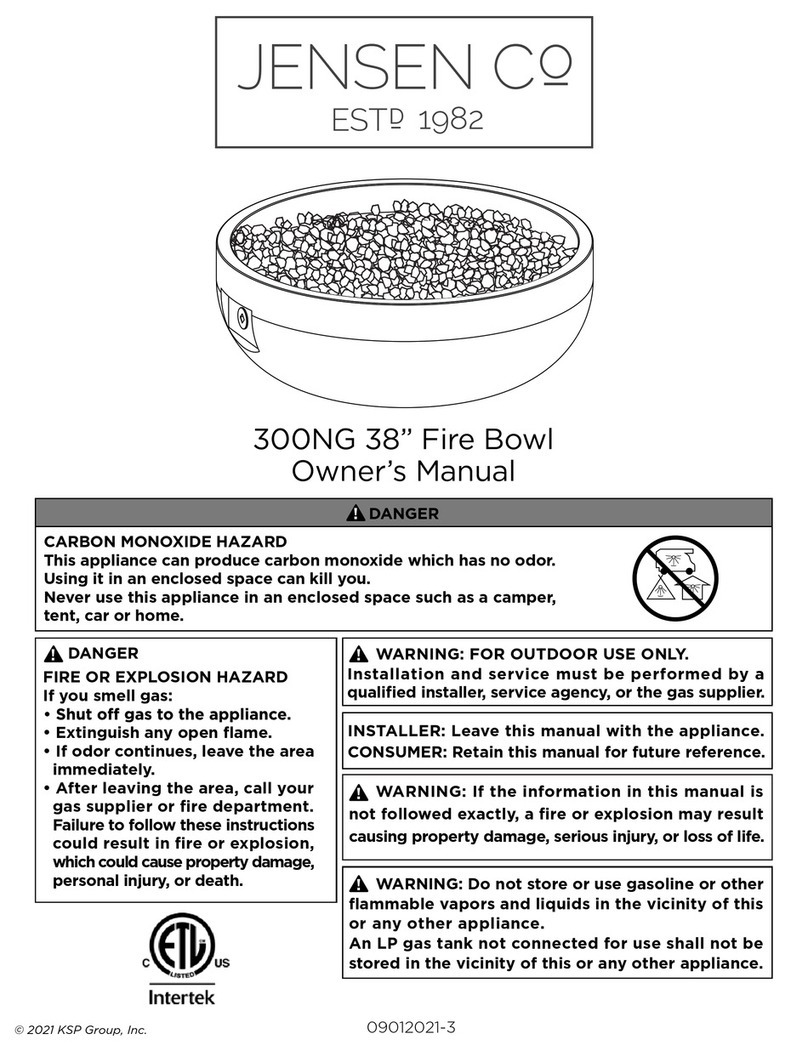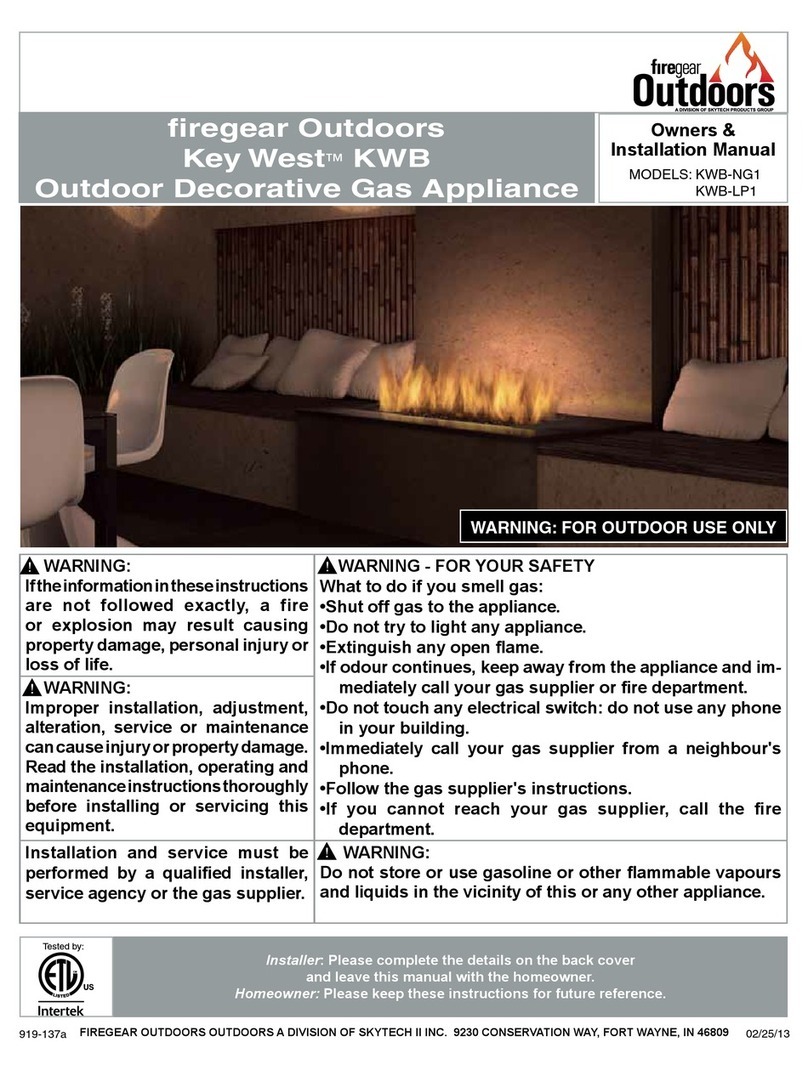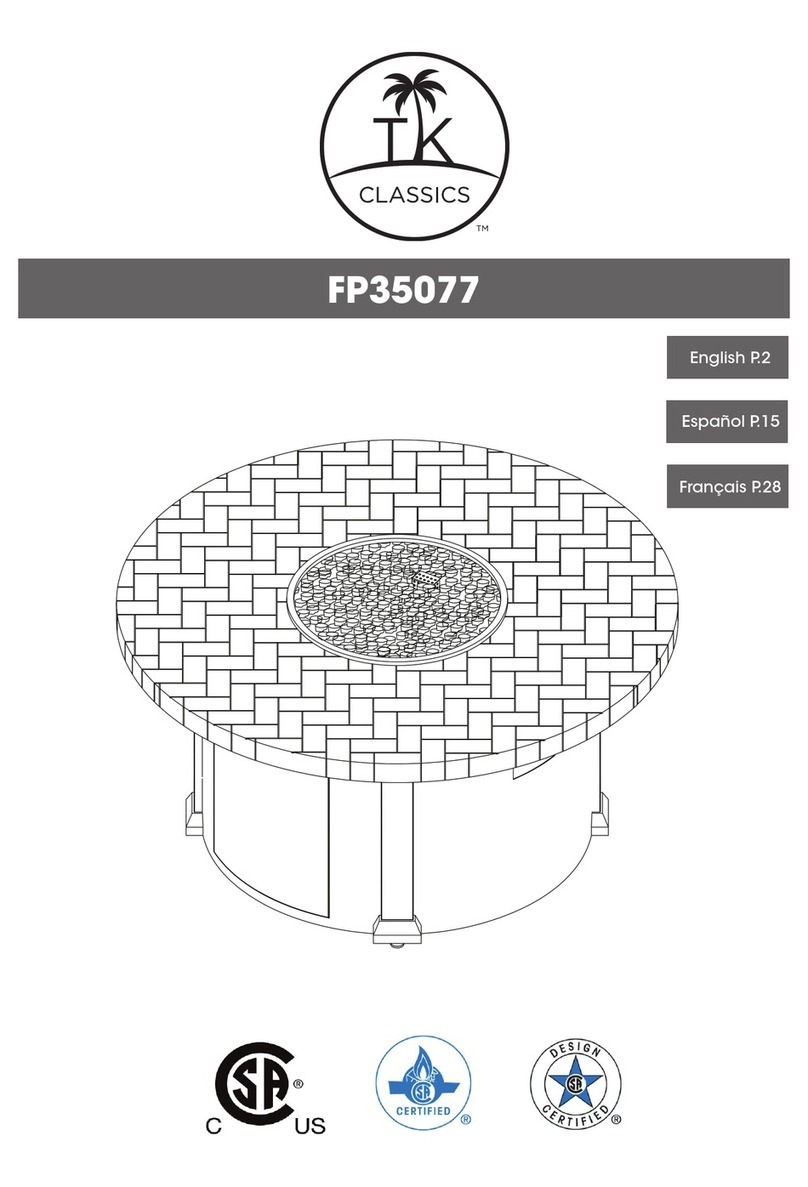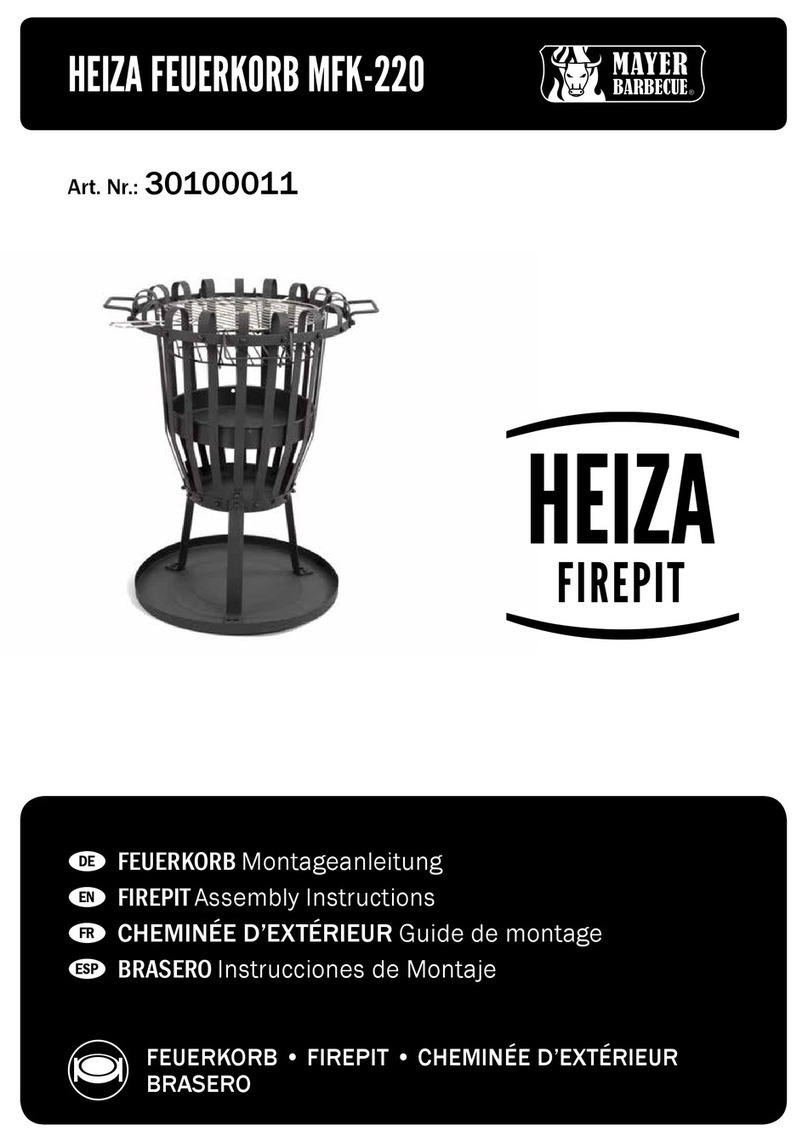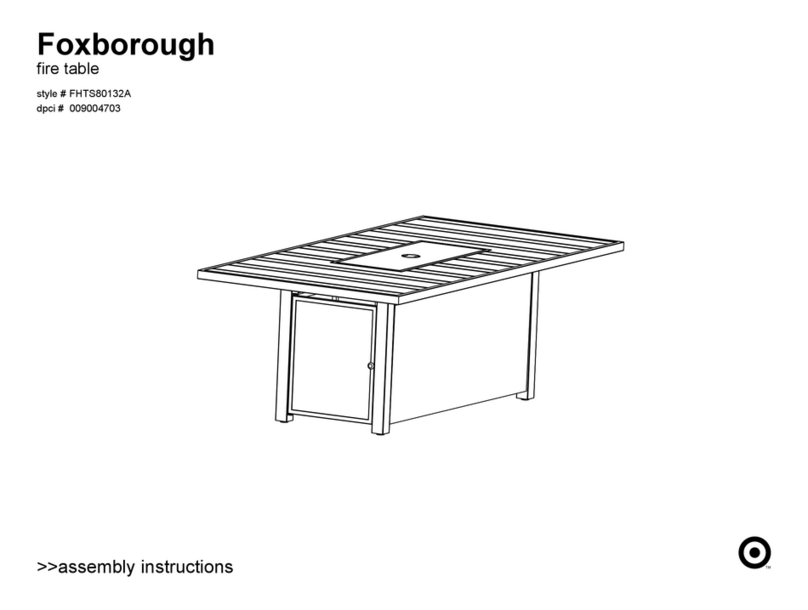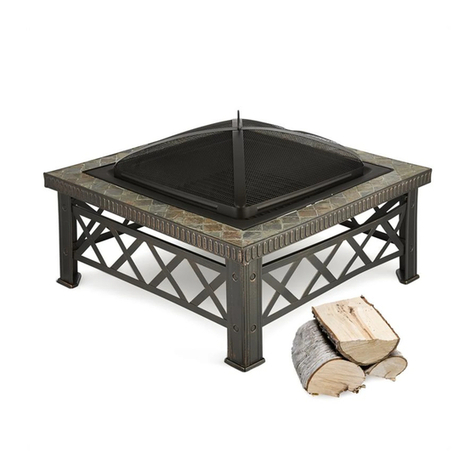
FOR LIQUID PROPANE GAS UNITS
WARNING
This outdoor appliance is for use with liquid propane (LP) gas only. The
conversion to or attempted use of natural gas in this outdoor appliance is
dangerous and will void your warranty.
LP gas is flammable and hazardous if handled improperly. Become aware of the
characteristics before using any LP gas product.
Propane Characteristics:
- Flammable, explosive under pressure, heavier than air and settles in pools in low
areas.
- In its natural state, propane has no odor. For your safety, an odorant has been
added.
- Contact with propane could burn the skin.
A dented or rusty liquid propane cylinder may be hazardous and should be checked
by your gas supplier prior to use.
Do not use a liquid propane cylinder with a damaged valve and any other worn out
parts.
Transport and store the empty gas cylinders carefully and properly. Cylinders must
be stored outdoors in a well-ventilated area out of the reach of children.
Young children should be carefully supervised when they are in the area of the
appliance.
Disconnected cylinders must have threaded valve plugs tightly installed and must not
be stored in a building, garage or any other enclosed area.
Never use a propane cylinder with a damaged body, valve, collar or footing.
If you see, smell or hear the hiss of gas escaping from the propane cylinder:
1. Turn off the gas supply and get away from the gas cylinder at once.
2. Do not attempt to correct the problem yourself.
3. Contact your gas supplier and/or fire department for help.
The LP gas supply tank must be constructed and marked in accordance with the
Specifications for LP gas tanks of the U.S. Department of Transportation (DOT) or
the National Standard of Canada, CAN/CSA-B339, LP gas tanks, Spheres and
Tubes for the Transportation of Dangerous Goods; and Commission.
LP gas tank must be arranged for vapor withdrawal.
It is essential to keep the outdoor appliance’s valve compartment, burners, and
circulating air passages clean. Inspect outdoor appliance before each use. This
outdoor appliance should be thoroughly cleaned and inspected on a regular basis.
Clean and inspect the hose before each use of the appliance. If there is evidence of
abrasion, wear, cuts, or leaks, the hose must be replaced prior to the appliance being
put into operation.
Inspect the burner before each use of the appliance. If there is evidence of damage,
the burner must be replaced prior to the appliance being put into operation. Use
Manufacturer approved or supplied replacement burner only.
LP Tank used must include a collar to protect the cylinder valve
The LP gas tank must have a listed overfilling prevention device (OPD) and a QCCI
or Type I (CGA810) LP gas tank connection.
The LP gas tank should not be dropped or handled roughly.
Tanks must be stored outdoors out of the reach of children. Do NOT store in a
building, garage, or any other enclosed area.
Never store your LP gas tank where temperatures can reach over 125°F.
